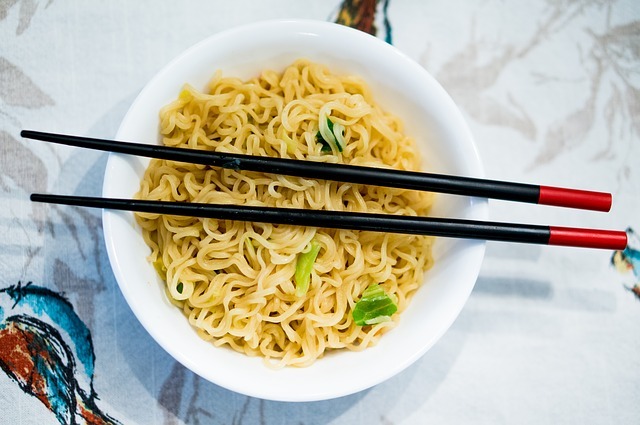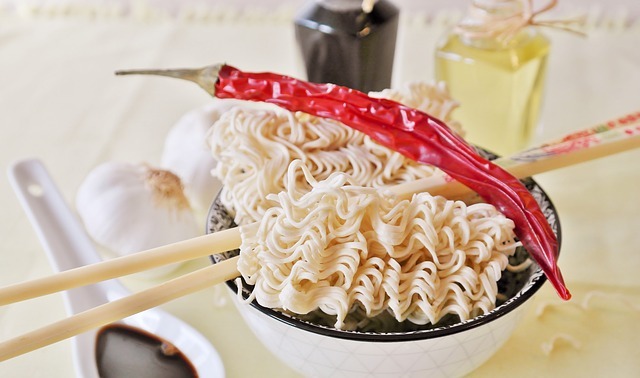Ramen has evolved over the years, moving from the status of a staple diet in the Far East to become one of the trendiest dishes in the west. Contrary to regularly held beliefs Ramen originated from China and not Japan. It made its way to Japan from China. Here is some interesting information on the background of Ramen moving from the east to the west conquering tables with its very distinct taste.  The Origin Of The RamenJapanese Ramen first came on the scene around the 17th century, when legend has it that Shu Shunsui, a a Chinese scholar brought it with him to Japan when he landed on Japanese shores to work with Tokugawa Mitsukuni. The story of Ramen goes on to profile that a restaurant in Japan employed Chinese cooks when it first opened in 1910 and the cooks were able to prepare the dish that had already been made popular by Shu Shunsui. Restaurants like https://www.yuzuramenthailand.com/ owe the success of their eateries and the distinct dish to this scholar who made it popular. The Rise Of The RamenThe popularity of the Ramen increased among laborers due to two strong reasons. One reason was its pricing. It was relatively cheap among other forms of food. The second reason was its filling nature. The second reason was that the dish was able to fill the stomachs of laborers easily. And the time taken for preparing the dish was also not too much, which made it possible for workers to quickly get their orders prepared. The distinct chewy texture of the Ramen comes from the art of mixing baking soda with water. Combined with the traditional broth that used to be served with it, it tasted perfect for a generation of workers in the far east.
The Origin Of The RamenJapanese Ramen first came on the scene around the 17th century, when legend has it that Shu Shunsui, a a Chinese scholar brought it with him to Japan when he landed on Japanese shores to work with Tokugawa Mitsukuni. The story of Ramen goes on to profile that a restaurant in Japan employed Chinese cooks when it first opened in 1910 and the cooks were able to prepare the dish that had already been made popular by Shu Shunsui. Restaurants like https://www.yuzuramenthailand.com/ owe the success of their eateries and the distinct dish to this scholar who made it popular. The Rise Of The RamenThe popularity of the Ramen increased among laborers due to two strong reasons. One reason was its pricing. It was relatively cheap among other forms of food. The second reason was its filling nature. The second reason was that the dish was able to fill the stomachs of laborers easily. And the time taken for preparing the dish was also not too much, which made it possible for workers to quickly get their orders prepared. The distinct chewy texture of the Ramen comes from the art of mixing baking soda with water. Combined with the traditional broth that used to be served with it, it tasted perfect for a generation of workers in the far east. The Appeal Of RamenUnlike other food that has evolved over the years, Ramen has a very unique history. Globally, rebellious nature has helped prop an idea and the dish has a similar story to tell. Sometime after the Japanese restaurant began serving Ramen in Tokyo, war broke out. Ramen became symbolic in a way. The Japanese invaded China and occupied portions. And the cuisine was also symbolic of occupation with soldiers and students alike finding the dish to be a reflection of the situation in the country. The Effects Of War On RamenWar had an adverse impact on Ramen’s popularity., mainly due to the massive food shortages. The government had to place restrictions on food supplies, as a result of the famine that ravaged the country. Restaurants and streetfood vendors were not permitted to earn profits till somewhere around 1950. A very little quantity of wheat flour escaped the regulations and made it to the market, with enterprising youngsters taking to black marketing of Ramen. It was tough times indeed for the Ramen as individuals caught dealing in it could end up in jail for possession and sale of food. This eased in the year 1950. The Consolidation Of RamenPost war effects included the effects of globalization. Chinese markets and Japanese markets began seeing a change in the menus and lifestyle. It is at this stage that the dish transitioned from a Chinese to a Japanese identity. When vendors and restaurants started selling other dishes, Ramen evolved into a national dish in Japanese culture. The dish also traced its link with the dark period of war and the manner in which it sustained people through the black market. This gave a romantic twist to the dish, adding to its popularity. While it now occupies a position as food that is cheap, there was a time when it was not intended to be sold cheap. It used to be targeted at the middle class and was more of an upscale dish.
The Appeal Of RamenUnlike other food that has evolved over the years, Ramen has a very unique history. Globally, rebellious nature has helped prop an idea and the dish has a similar story to tell. Sometime after the Japanese restaurant began serving Ramen in Tokyo, war broke out. Ramen became symbolic in a way. The Japanese invaded China and occupied portions. And the cuisine was also symbolic of occupation with soldiers and students alike finding the dish to be a reflection of the situation in the country. The Effects Of War On RamenWar had an adverse impact on Ramen’s popularity., mainly due to the massive food shortages. The government had to place restrictions on food supplies, as a result of the famine that ravaged the country. Restaurants and streetfood vendors were not permitted to earn profits till somewhere around 1950. A very little quantity of wheat flour escaped the regulations and made it to the market, with enterprising youngsters taking to black marketing of Ramen. It was tough times indeed for the Ramen as individuals caught dealing in it could end up in jail for possession and sale of food. This eased in the year 1950. The Consolidation Of RamenPost war effects included the effects of globalization. Chinese markets and Japanese markets began seeing a change in the menus and lifestyle. It is at this stage that the dish transitioned from a Chinese to a Japanese identity. When vendors and restaurants started selling other dishes, Ramen evolved into a national dish in Japanese culture. The dish also traced its link with the dark period of war and the manner in which it sustained people through the black market. This gave a romantic twist to the dish, adding to its popularity. While it now occupies a position as food that is cheap, there was a time when it was not intended to be sold cheap. It used to be targeted at the middle class and was more of an upscale dish.
I’m a 20-something stay-at-home mother and wife. I have an amazing husband, a beautiful daughter, two loving dogs, and a lazy cat. I wouldn’t change my life for anything! I love to read, listen to music, cook and blog!

Speak Your Mind